Throwing 101
- CoachTad

- Dec 10, 2020
- 4 min read
Updated: Sep 6, 2023
Throwing Fundamentals:
The Three Phases of the Throwing Motion
1 - "Ready": Get the body ready to rotate
Using the legs to create momentum towards the target. Notice how the chest and hips stay "closed" - pointing towards 3B for a righty - until the front foot has landed. The upper body should be in a "T Position" as the foot lands. Body is now ready to rotate.
2 - "Rotate": Torso rotation creates arm speed
Using core rotation to accelerate the baseball. Notice the arm does not extend until the pitcher has rotated enough that the throwing arm is past their head. The head stays stable until the ball is out of the hand.
3 - "Release": Extend towards the target and pull down
As the arm passes the head it extends towards the target and then down towards the front foot after release.
How to reinforce good fundamentals when playing catch
Warming up and playing catch are good times to reinforce good throwing fundamentals. You can warm up by breaking the mechanics down into three phases, then put it all together with games and challenges that reinforce critical concepts. Try this warm-up routine. Keep track of where you got stuck or lost. Do 10-15 reps of each drill.
The following three-step routine of simple drills reinforces good fundamentals while you warm up:
A - Arm Extensions
Teach properly timed arm extension
Thrower Setup
Start with thrower standing 10-15 feet away from the catcher or target
Stand upright with feet close together, toes pointing approx. 45 degrees towards the glove-side shoulder, torso square to the target
Glove-side elbow firmly against the body and bent to keep glove above waist with palm facing up towards throwers face.
Throwing arm in “neutral” position – elbow level with shoulder in all directions and directly below the ball. Forms a right angle. My elbow looks above my shoulder because my shoulders/hips are not flat, but the elbow is in line with the shoulders.
The body will look like the number four (4)
Action/Movement
Thrower should rotate their core so the throwing-side shoulder gets out in front of the body and extend arm to release the ball towards the target.
Follow through down towards the front foot. Throwing arm should end up hanging loosely down in front of the thrower, not pulled across the body.
10-15 reps
B - One-Foot Rotations
Teach good rotation, balance, and properly timed arm extension
Thrower setup
Start with thrower 20-25 feet from target.
Similar to the previous drill… The difference is in the lower half of the body because this drill is meant to teach the player to rotate once they have shifted weight onto their front leg…
Thrower balances with nearly all their weight on their front leg - aka the “landing leg”. Front knee should point towards the target.
Rest the big toe of the back foot lightly on the ground, behind the front foot and in line with the target.
Solid, upright posture with elbows hanging down to sides and hands meeting at the chest
Action/Movement All done maintaining sturdy balance on the front leg
Rotate chest so the shoulders are lined up to target (allow lower body and back foot to turn with torso), and raise the elbows until elbows and shoulders form a (fairly) straight line. Player should not extend throwing arm – keep it near a 90-degree angle.
Thrower begins rotating their chest towards their glove (and therefore the target. Player should not extend throwing arm during this part of the rotation.
If the player rotates properly, the upper body looks a lot like the upper body in the beginning of the “Extend and Release” phase taught in the previous drill.
If the player can learn to rotate properly they will consistently get their upper bodies ready to properly extend their arm to release the ball.
Rockers
Trains throwers to create forward momentum without starting their rotation early
Thrower setup
Start with thrower 30-35 feet from target
Feet spread out approx. 2x shoulder width, standing sideways with glove-side shoulder pointed at target. Knees bent in general athletic ready position. Back foot perpendicular to target, front leg pointed at target. Hips aligned with shoulders, encourage players to “sit down” in their legs.
Upright upper body, elbows at sides, bent 90 degrees with hands together
Weight balanced between both feet
Action/Movement
Shift weight 75-80%(ish) to front foot, point front elbow and front knee at target. Maintain good posture and do not rotate torso towards target.
Shift weight back onto back leg, maintaining good posture and separating hands to raise arms into the “loose-‘T’” without extending elbows.
Shift weight forward again with intent to throw. Maintain upright, loose-“T” position without rotating torso towards target. Allow back foot to drag directly behind the body, watch for it “leaking” out to the side.
Common mistakes by young throwers
Losing balance or posture at any point during the throwing motion. Players should not be stiff, but focus on stability and not over-throw for power
Early Rotation: players must shift weight forward, without going so far that they tip forward, before starting their rotation. If players rotate with their weight back, they spin uncontrollably. If their hips begin to open before they are ready to rotate, they “leak” power and cannot get their full strength into the throw.
Early Extension: when a player begins extending their arm too early in the motion are actually accelerating the ball in the wrong direction and putting unnecessary pressure on their arm.
Incomplete Rotation: players should try to rotate their torso until their shoulders have completely rotated to point the back shoulder at the target. When extend their arms toward the target with their chest facing the target, they push the ball and put unnecessary pressure their arms.
Bonus Note: Balance and stability are the key to consistency and power. The body has a subconscious ability to protect itself by preventing a player from accelerating their arm beyond they player’s ability to safely slow back down without injury. A player can push past this natural limit, but they quickly lose control as the brain shuts down the dangerous movement. This process is why over-throwing leads to poor results. Therefore, a player who wants to learn to throw hard should focus on balance and stability as much as strength and power.
Good luck!

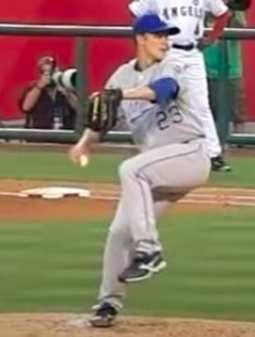

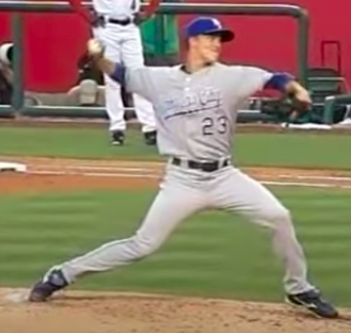



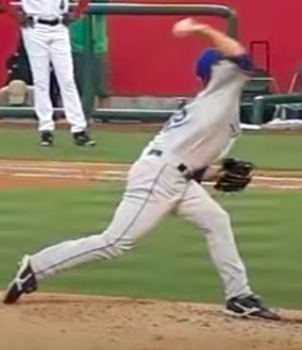

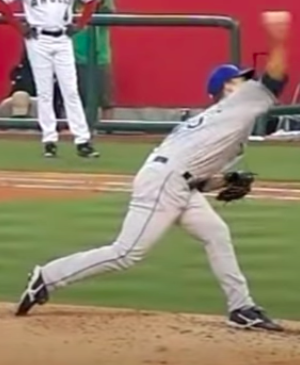

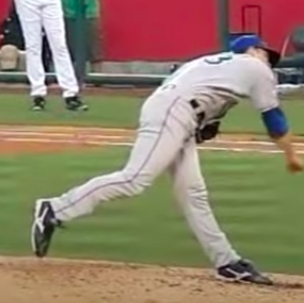


















Comentarios